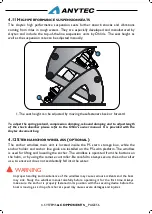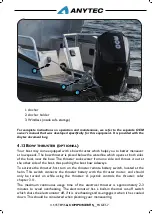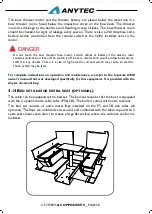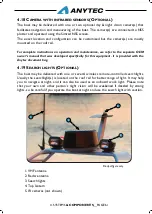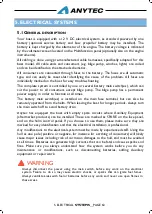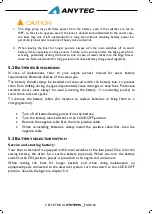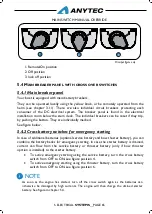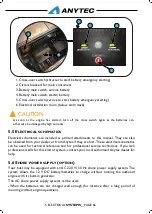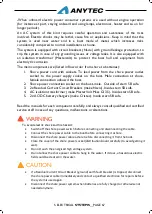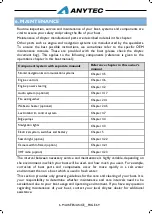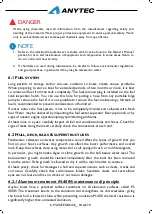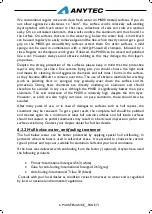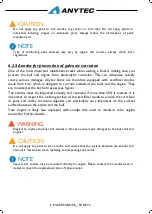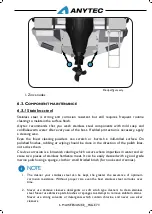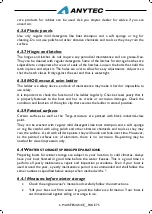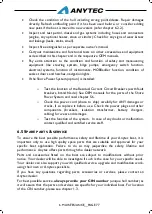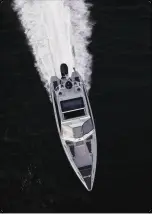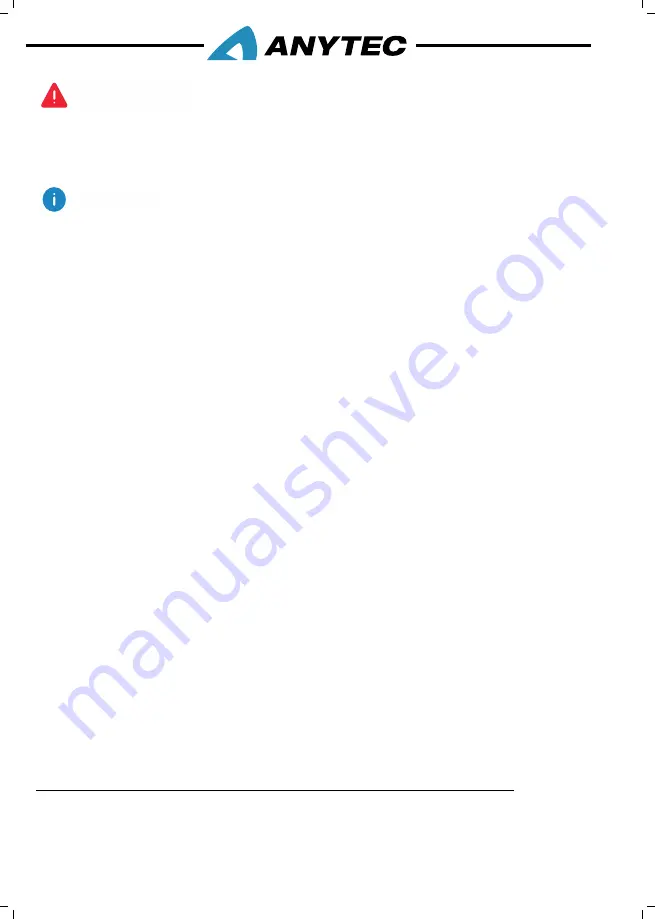
6. MAINTENANCE__PAGE 70
DANGER
NOTE
While using chemicals, read all information from the manufacturer regarding safety and
handling of the material. Wear proper protective equipment to ensure personal safety. Work
only in well-ventilated areas and keep all chemicals away from open flames.
1. Refer to the individual manufacturer’s manuals, which can be found in the Owner’s Manual
packet, for care and maintenance of equipment and components. In some cases, failure to
do so could void the warranty.
2. If chemicals are used during maintenance, be careful to follow environmental regulations
and good practices, in particular if they may be released to water.
6.1
F
UEL SYSTEM
Long periods of storage and/or non-use, common to boats, create unique problems.
When preparing to store a boat for extended periods, of two months or more, it is best
to remove all fuel from the tank completely. The fuel remove plug is installed on the fuel
tank inspection hatch. You can use this hole for putting a hose from any portable bilge
pump to remove the fuel. If it is not possible to remove the fuel, maintaining a full tank of
fuel is recommended to prevent condensation of humid air.
If water enters the fuel system, it has to be completely drained and refueled with fresh
fuel. Water may be detected by inspecting the fuel water separator filter (optional) or by
signs of uneven engine operation/jumpy rpm/starting problems.
At least once in a year, carefully inspect all fuel and ventilation lines and hoses. Check for
signs of leaks along them and carefully check the connections at each end.
6.2
H
ULL
,
DECK
,
RAILS
&
SUPERSTRUCTURES
Freshwater, saltwater and water temperature can all affect the types of growth that you
find on your boat’s surfaces. Any growth can affect the boat’s performance and overall
look. Keep the surfaces clean using water and a soft sponge /brush, or mild detergents.
In particular, you might notice algae or slime growth on the hull below water level. The
below-water growth should be cleaned immediately after the boat has been removed
from the water. If the growth is allowed to dry it will be much harder to remove.
At least yearly, check for damages to hull and superstructures such as dents, cracks and
corrosion. Carefully check that swim/rescue ladder, handrails, cleats and secure/bow
eyes are not loose and has no cracks or corrosion damages.
6.2.1 Aluminum treatment M-400® maintenance & principle
Anytec boats have a patented surface treatment on all aluminum surfaces, called M-
400®. The treatment bonds to the aluminum and strengthens its characteristics, giving
the boats hull a fantastic shine while preventing oxidation.M-400 chemical resistance is
significantly higher than untreated aluminum.
Содержание A27 CAB
Страница 1: ...OWNER S MANUAL ANY TE C A 27 C A B...
Страница 2: ......
Страница 4: ......
Страница 8: ......
Страница 10: ...WELCOME ABOARD__PAGE 2...
Страница 43: ...3 GENERAL INFORMATION__PAGE 35...
Страница 87: ...7 ATTACHMENTS__PAGE 1...

